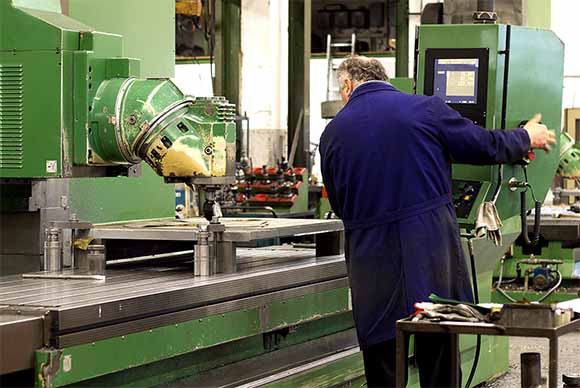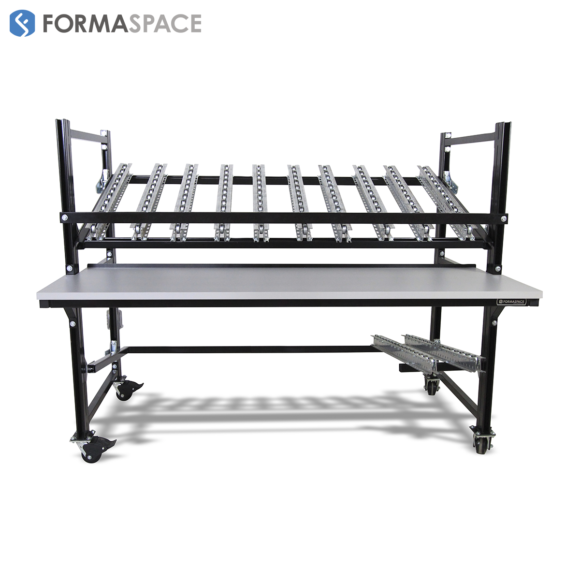If you are responsible for worker health and safety in a manufacturing work environment, you know that injury prevention at work is a serious business. We’ll take a look at the latest occupational research on the top causes of workplace injuries. We’ll also identify practical workplace safety tips that can help keep your workers healthy and productive – while limiting your exposure to workers compensation claims.
What’s the Cost of Non-fatal Workplace Accidents in Lost Income and Productivity?
According to the 2016 Liberty Mutual Workplace Safety Index, the most serious non-fatal disabling workplace injuries cost nearly $62 billion in direct U.S. workers compensation claims.
That figure is quite sobering.
It’s nearly as high as the estimate for lower back pain — over $85 billion* – calculated by Stanford University researchers.
(*This estimate is for both work and non-work based injuries)
Which are the Most Injury Prone Manufacturing Industries?
The Bureau of Labor Statistics (BLS) keeps track of different rates of manufacturing accidents within 21 different manufacturing sub-categories, ranging from primary metal manufacturing to plastics and rubber products manufacturing.
Looking at the chart we created from the BLS’s 2014 data, it’s clear that wood product manufacturing has the highest rate of non-fatal occupational injuries and illnesses*.
(*We are counting non-fatal injuries that resulted in employee days off, employee work restrictions or employee job transfer.)
Chart of Incidence Rates per 100 Workers in 2014 for non-fatal Manufacturing occupational injuries.
Food manufacturing and nonmetallic mineral product manufacturing are ranked as second and third most dangerous respectively. Surprisingly, petroleum and coal products manufacturing have the third ‘safest’ rate of accidents in BLS’ records (again this is for non-fatal accidents). Computer and electronic product manufacturing had the second lowest accident incident rate.
Can you guess which industry sector had the lowest rate for non-fatal accidents? It is beverage and tobacco product manufacturing.
Which Manufacturing Industry Sectors have the Highest and the Lowest Absolute Number of Accidents?
Now let’s take a quick look at which manufacturing industry sectors ranked in terms of an absolute number of non-fatal accidents. (Naturally this number will vary from the rate because of the different sized industry sectors.)
Absolute number of non-fatal Manufacturing occupational injuries in 2014
In absolute terms, fabricated metal product manufacturing had the largest number — 66,100 — of non-fatal injuries that resulted in employee days off, work restrictions or job transfers.
Food manufacturing was again ranked number two, with 66,100 accidents.
At the other end of the scale, the safest sector for non-fatal injuries was leather and allied product manufacturing, with just 900 non-fatal accidents.
What Are the Leading Causes of Injuries in the Workplace?
Now let’s take a closer look at occupational research from the 2016 Liberty Mutual Workplace Safety Index.
(Note: These figures cover all workplaces, not just manufacturing facilities.)
Here is how Liberty Mutual ranks workplace injuries, in descending order of occurrence:
- Overexertion involving outside source
- Falls on the same level
- Falls to lower level
- Struck by object or equipment
- Other exertions or bodily reactions
- Roadway incidents involving motorized land vehicle
- Repetitive motions involving micro-tasks
- Struck by object or equipment
- Caught in/compressed by equipment or objects
- Slip or trip without fall
When we chart the cost of these accidents, the order changes slightly as some injury categories incur higher health care and worker compensation costs.
Top 10 Causes and Direct Costs in Billions Most Disabling U.S. Workplace Injuries
Practical Workplace Safety Tips that Can Help You Keep Your Workers Healthy and Productive
So what can employers and safety managers do to promote injury prevention and reduce workers’ compensation costs?
We’ll start with the same top 10 injuries from Liberty Mutual above, but this time group them into three categories:
- Overexertion (including Repetitive Motion Stress)
- STF (Slips, Trips, and Falls)
- Equipment and Roadway Accidents.
Then we’ll offer practical workplace safety tips in each category that can help you keep your workers healthy and productive.
Tips for Overexertion Injury Prevention, including Repetitive Motion Stress
This category includes Liberty Mutual’s top injury source — Overexertion involving outside source — as well as # 5 Other exertions or bodily reactions.
TIP: Workplace safety programs in this category should focus on reducing Musculoskeletal Disorders (MSDs), which are injuries affecting musculature, ligaments, tendons, bones, soft body tissues and nerves.
TIP: Injury prevention programs should focus on reducing awkward or static postures like sitting or squatting for long periods; lifting heavy or awkward objects; using poorly designed or poorly fitting tools, performing repetitive motions and poor work organization.
TIP: Make sure you are providing employee training that emphasizes safety training, standing and stretching breaks, and using PPE (personal protective equipment).
TIP: Here are five specific workplace safety tips for reducing lower back pain injuries:
- Train employees on the proper safe way to lift objects
- Provide power-assisted lifts for heavy objects
- Use a ‘Team Lift’ approach for objects over 40 pounds if not using a power lift
- Encourage employees who sit for long periods to stand
- Install Formaspace variable height Sit-to-Stand desks and workbenches for employees who sit throughout the day
The video above from the Canadian Centre for Occupational Health and Safety (CCOHS) has practical tips for lifting objects solo. For objects over 40 pounds, we recommend a ‘Team Lift’ approach or using power lift assistance.
Variation of Overexertion: Repetitive Motion Stress
Liberty Mutual ranks repetitive motions involving micro-tasks as the 7th most common source of workplace injuries. This type of injury can lead to medical conditions like Carpal tunnel syndrome (CTS), Tendinitis, and Bursitis.
TIP: Encourage employees to sit properly, take breaks, and change physical positions.
TIP: You can also reduce repetitive stress injuries by using appropriate tools and PPE, such as shoulder pads, knee pads and vibration reducing gloves.
Slips and Falls (STF: Slips,Trips, and Falls)
Our second group combines Liberty Mutual #2 Falls on the same level, #3 Falls to lower level, and #10 Slip or trip without fall.
These injuries, commonly referred to as STF accidents (for slips, trips and falls), typically result in injuries to the knee, ankle or foot, wrist or elbow, back or shoulder, hip or head.
TIP: Reduce slips, trips and falls by ensuring your workplace is clean, well-organized and tidy. (See our article on applying the Japanese 5 S process at your facility.)
TIP: Make sure you have safe walking routes and your employees wear proper footwear with good traction. Finally, teach your employees to how to fall ‘properly’ to avoid severe injuries.
TIP: Ladders are of special concern when establishing an accident prevention program. NIOSH has created a mobile app for using ladders properly. Check it out if your facility uses ladders often.
Equipment Accidents and Roadway Accidents
Our third and final group combine Liberty Mutual’s #4 Struck by object or equipment, #8 Struck by object or equipment, and #9 Caught in/compressed by equipment or objects. We can also include the related source of injuries, #6 roadway accidents involving a land vehicle.
Of particular concern in manufacturing are crush accidents caused by machines with moving parts, materials in storage falling on workers and contact with moving equipment like forklifts or trucks.
Forklift accidents are not a laughing matter. Here are some sobering examples that illustrate how quickly a situation can become dangerous.
Moving machinery that requires workers to interact with moving parts, such as machines tools, lathes, punch tools, presses pose a special hazard for crush and amputation risk.
TIP: Review and train safety practices on a regular basis. Make sure positive interlock tools are functional and not disabled. Ensure employees wear PPE.
TIP: Consider how PPE like face goggles or sound muffling ear protection can limit communication. Ensure workers know how to communicate in these circumstances.
TIP: Train workers on safe material handling practices, especially for material storage that is stacked in a warehouse.
Safety Rules for Vehicles like Forklifts and Trucks
Like bike riders who don’t follow the rules of the road on public streets, workers driving heavy equipment or vehicles on private roads at manufacturing plants often improvise or flaunt traffic rules.
TIP: Emphasize consistent ‘rules of the road’ when training heavy equipment operators. Make sure language barriers are not getting in the way of proper education about safety issues like proper right-of-way, following speed limits and communicating through signals.
TIP: Wearing seatbelts when driving equipment is an important part of safety culture, even when driving across the yard from one side of the plant to the other.
Looking for Expert Advice on How to Make Your Manufacturing Facility Safer AND More Efficient at the Same Time?
You’ve come to know Formaspace as a leading manufacturer of manufacturing workspace, storage, packing and shipping station solutions.
But did you know that Formaspace also offers manufacturing customers a Rapid Plant Assessment (RPA) program for their facilities?
Take advantage of our thirty plus years of Lean manufacturing experience. As part of Formaspace’s exclusive RPA program, we provide custom assessment and consultation services, including on-site facility surveys, confidential operator interviews, current state process evaluations, and other valuable continuous improvement insights that will help you increase your manufacturing efficiency while reducing your exposure risk for worker accidents.
Ask to speak with one of our design consultants who can show you how our RPA program implementation at Boeing led to a completely revised floor of custom workstations, that helped increase the days since the last injury from 30 days at the start of the program to over 360 days and counting since the RPA program was fully implemented.














